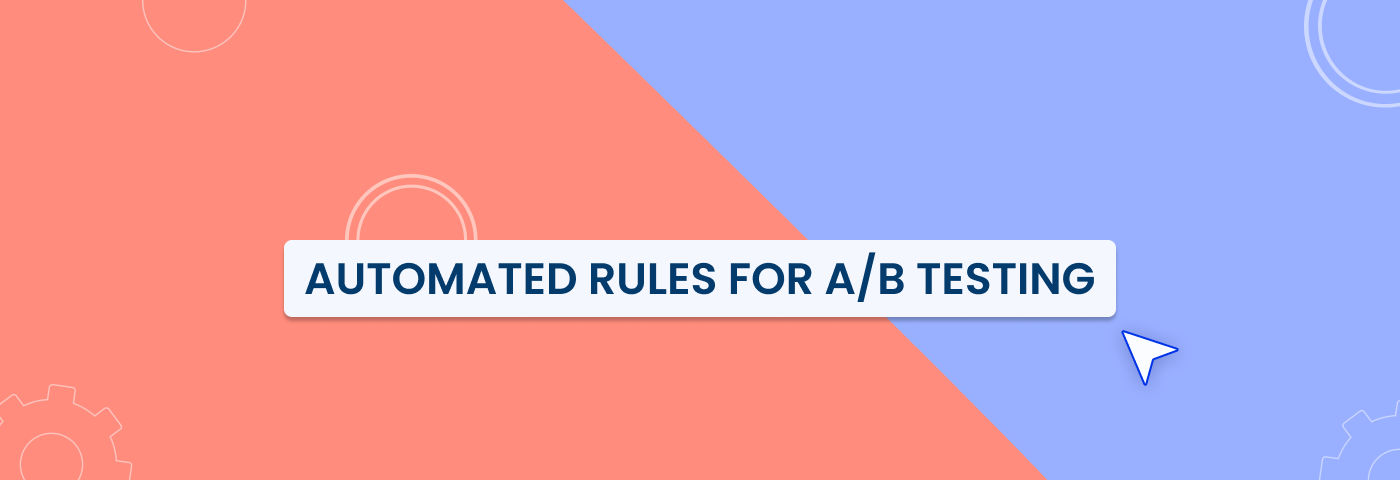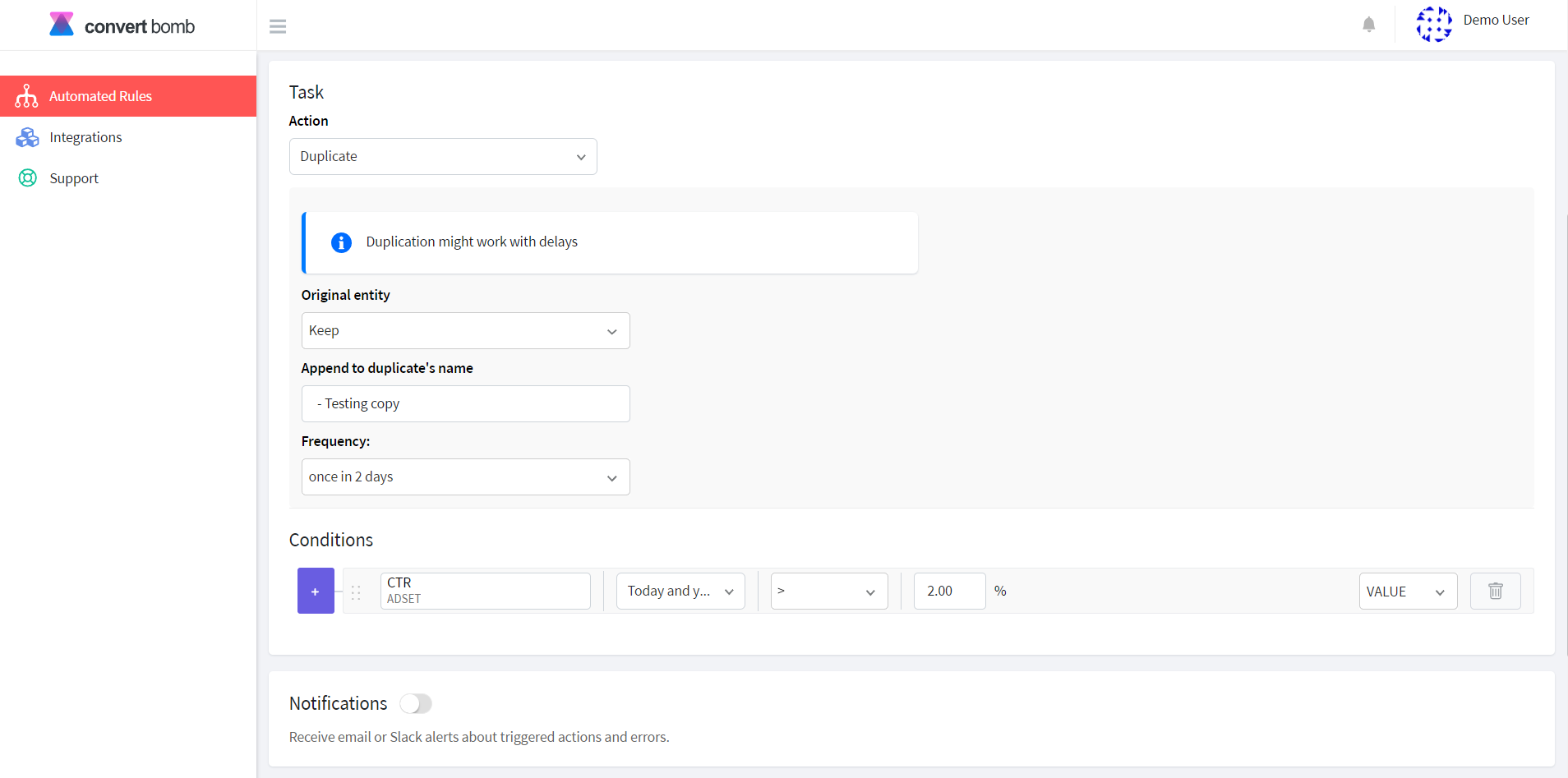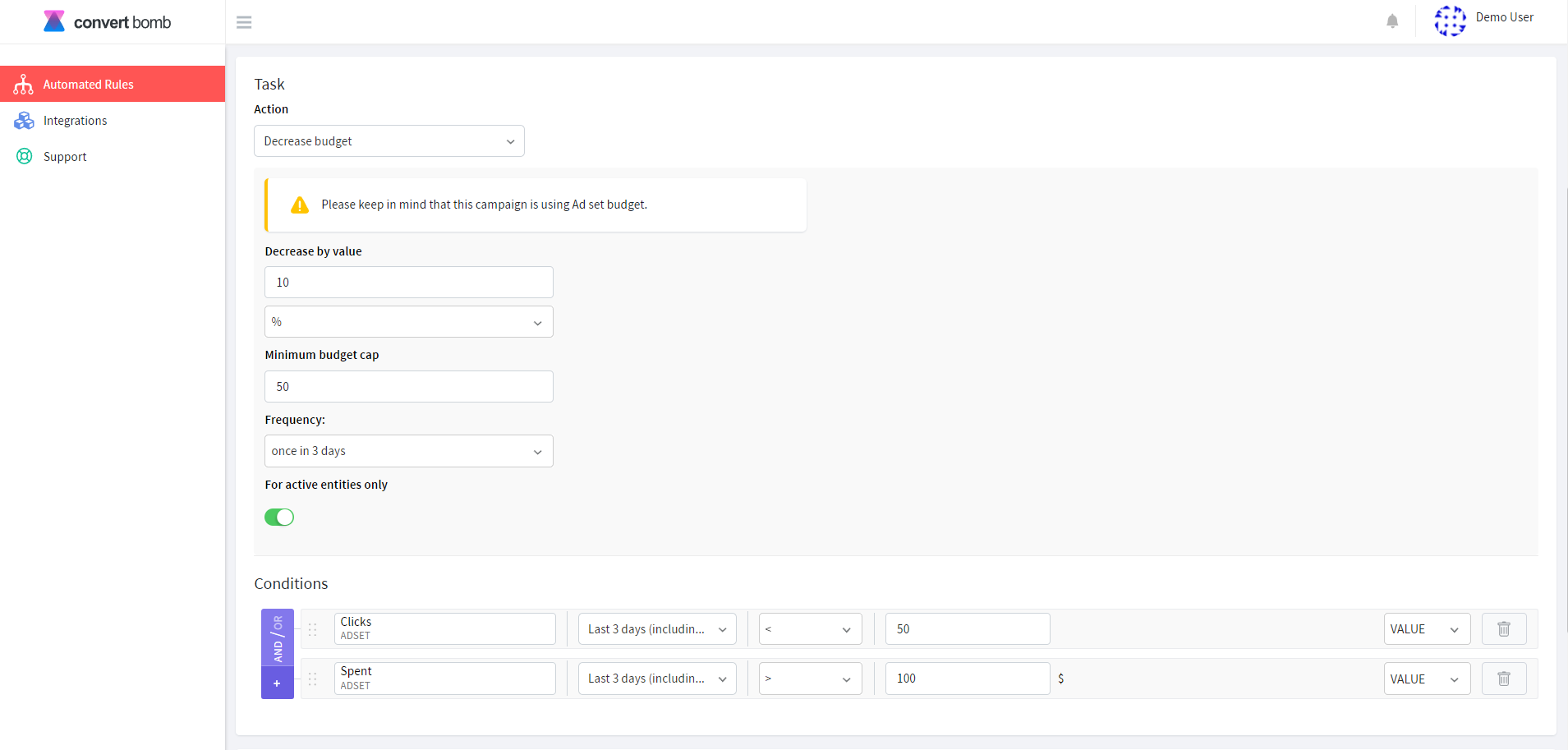Automated Rules For A/B Testing: How to Test Your Ads Efficiently
2024-05-02

If you’re running ad campaigns online, you know how important A/B testing really is for getting consistently good results and staying competitive. We’ve already explained all the basics you need to know to figure out the best ad variations in our A/B testing guide. Now, let’s cover another important topic – how to automate the A/B testing process for maximum efficiency.
Handling A/B tests manually can take up a lot of time and may not be very effecient, and that is where automated rules step in. In this article, we'll delve into the advantages of automating A/B testing using automated rules and show how they can help you transform your advertising approach and enhance ad performance without difficulty.
Why automate A/B testing?
The process of A/B testing can be quite difficult with all the theoretical concepts you need to grasp in order to set up your tests correctly. With the need to continuously improve conversion rates and test regularly, it can consume too much of the time you could have spent on other tasks.
Here’s the good news: automated rules can help you test more efficiently and at a greater scale than before. For example, if you’re A/B testing ad campaigns, rule-based ad automation tools like ConvertBomb can help you automate basic ad management tasks like pausing, scaling, duplicating ads, adjusting their budgets, and a lot more.
In short, automated rules allow you to not only monitor important performance metrics while testing your ads but also instantly take necessary actions to scale the winners and avoid spending too much on underperforming variations.
Using automated rules for A/B testing ad campaigns has several advantages:
- Saves time: you won’t have to spend as much time checking and changing things because the rules will do it for you;
- Works faster: you can try out lots of ad variations at the same time and see what works best more quickly;
- Helps find the best ads: automated rules help you figure out which ads are the most successful based on your chosen KPIs, so you can focus your efforts on the best variations and get better results;
- Works for lots of ads: you can use automated rules for several ads, ad sets, or campaigns at once without making things harder for yourself and maintaining consistency in your optimization efforts.
Now, it’s time to consider specific cases of how you can use automated rules to test your ads better.
How to automate A/B testing with automated rules
Let’s start with a specific scenario that might be familiar to many advertisers.
Imagine that you have to test out multiple different ad ideas for your or your client’s ad campaigns. You want to try different ad visuals, copies, CTAs, etc., so you create multiple ad sets with several ads inside them.
That doesn’t sound so bad yet, but here’s the main concern: if you’re running too many ads to handle manually, you can easily miss the important changes in ad performance. In this case, you might not know whether the particular ads or ad sets are performing well or not, which means you’re not A/B testing properly and you’re also potentially losing money on under-performing ads.
To avoid this, you can set just a couple of automated rules to help keep things organized and running smoothly.
Here are the 4 basic automated rules that can help you not just run multiple A/B tests but also instantly put their results to practice:
1. Duplicating high-performing ad sets for new tests
If you have an ad set that is getting a lot of clicks or conversions, it might me a good idea to try running it for a new audience segment to see if it will work well in the new context as well. Instead of creating a new ad set from scratch, you can set a rule to automatically make copies of the successful ad sets.
Here’s how this automated rule might look like on ConvertBomb:

It works like this: every ad set within specific campaigns that had a click-through rate of more than 2% today and yesterday will be duplicated once in every 2 days, and the original entity will keep running just as before. Once we duplicate all ad sets with a high CTR, we can start running them with little tweaks here and there (for example, we can choose a new audience or choose a new placement) and check if they will keep performing well.
This process is essential for figuring out what exactly brings good performance and if the results will be consistent for the same ad set in different cases.
2. Scaling successful ad sets
Besides simply duplicating well-performing ad sets to try them in new contexts, you can also raise their budgets to put more money into what's working to get even better results. For this, you can create a rule that will let you allocate more money to ad sets with good KPIs that you haven’t spent a lot of money on.
Here’s an example of this automated rule:

It works like this: every ad set that maintained a CTR of 2% or higher during the last 3 days but has spent $50 or less during this timeframe will get a 10% budget raise once in every 3 days. This way you can scale ad sets with good performance safely and gradually without worrying that you’ll spend too much.
With a maximum budget cap set, you won’t spend more money than you can afford and the budget will stop increasing if the KPIs drop lower than what you’ve specified. Scaling winning ads and ad sets is crucial for quickly using the insights from your A/B tests to achieve better results and get the most out of your budget.
3. Pausing under-performing ad sets
Now, let’s consider a less optimistic scenario. Every A/B test will have its winners and losers, and just as winning ad variations demand attention from you, so do the poor-performing ones.
When an ad or an ad set isn't getting enough clicks or conversions, you can set a rule to stop it from running. It can help you save your money by not spending it on ad variations that aren't working well and shift your focus to the ones that are bringing better results.
Here’s an example:

It works like this: every ad set that showed a low conversion rate during the last 7 days but spent more than $350 will be paused. The conversion rate is a custom metric that you can create on ConvertBomb, and it is calculated by dividing the number of purchases by the number of clicks and multiplying it by 100%.

Pausing rules are great for managing your ad budget more efficiently and preventing money losses when performance isn’t looking great. It can be necessary if you’re split testing a lot of ad variations and want to avoid spending money on ads that have already had their fair share of running but didn’t meet your KPIs.
4. Decreasing the budget for low performers
There can also be situations when ads don’t perform well but you still want to give them a chance instead of stopping them completely. In this case, you can simply decrease their budgets a bit to avoid overspending.
Here’s how a rule like this can look on ConvertBomb:

It works like this: every ad set that generated less than 50 clicks during the last 3 days but spent more than $100 during the same time will get a 10% budget decrease every 3 days. Notice that it might be important to set a minimum budget cap to avoid going below the minimum acceptable amount of money you need to spend on ad sets in order to get any results from them.
Using automated rules for decreasing budgets is one of the best ways to ensure that each ad or ad set gets a chance even after the test is over – you might not know if the poor performance can be attributed to the ad variations themselves, or to random factors that could have influenced the outcomes. Running poor-performers with a lower budget can help you check whether the testing results were accurate.
So far, we’ve went through 4 types of automated rules that can help you run better A/B tests and make the process less complicated and more manageable. However, there are many other ways to benefit from automated rules when it comes to advertising online. You can check out the videos on our YouTube channel to learn how to create automated rules for different purposes and run more efficient ad campaigns.
Conclusion
Without automated rules, it can be quite hard to run A/B tests and make everything work well because you might need to constantly check ad performance and take necessary actions manually. Time is a precious resource, and automated rules can help you spend time more wisely and save it for other important tasks. Besides, they allow you to quickly figure out which ad variations work best and which ones don't, so you can focus on what brings in the most results.
With ConvertBomb, you can improve your A/B testing strategies on several advertising platforms: Facebook, Instagram, Google, TikTok, and others. If you’re ready to start A/B testing like a pro, sign up for a free trial and explore all the ways automation can help you get more conversions and a higher ROI from your ads.
But remember: success doesn't stop there. It's important to keep testing and improving your ads over time. Since people's preferences and needs change constantly, you need to stay flexible and keep trying new things to stay competitive and grow your business.

